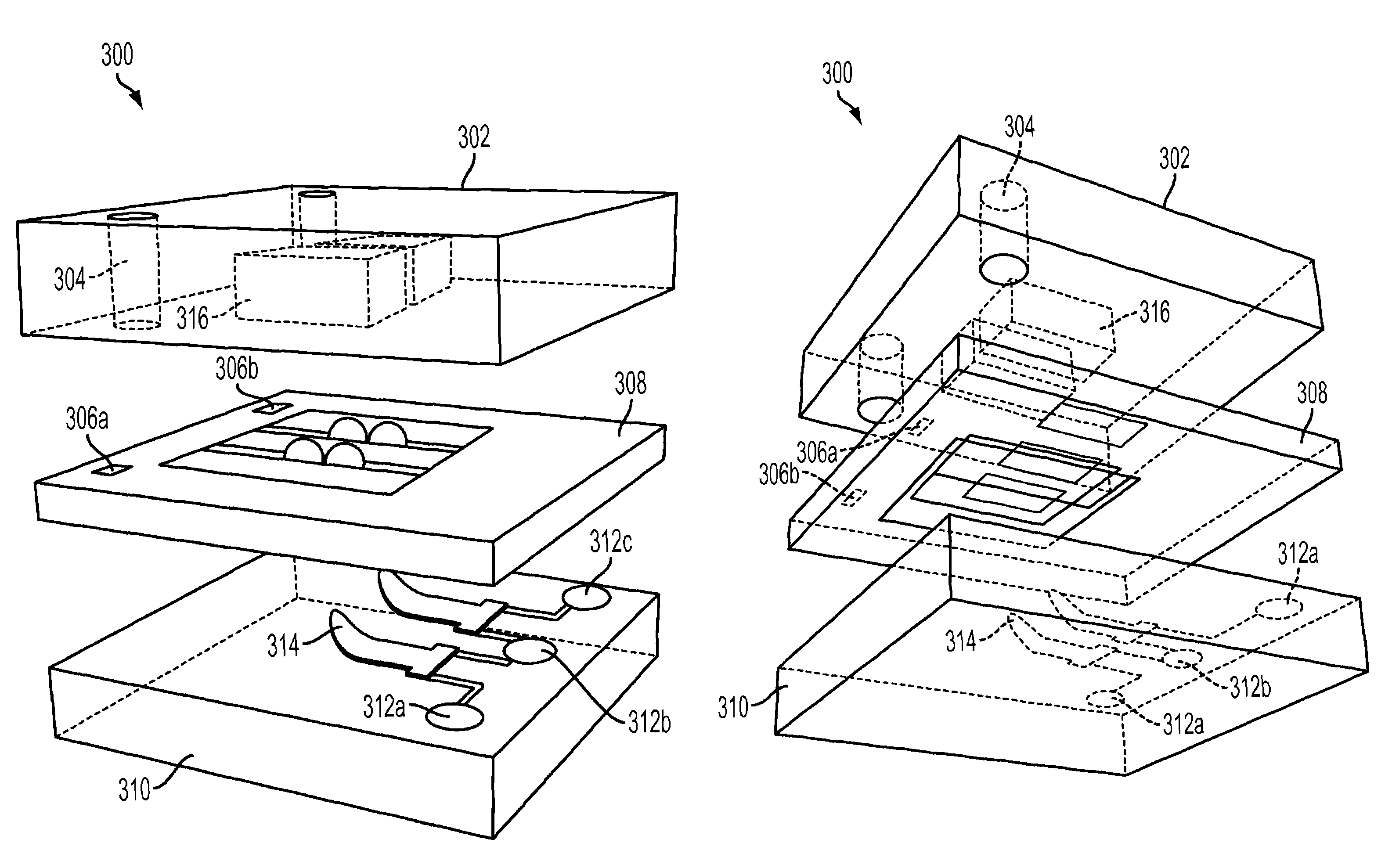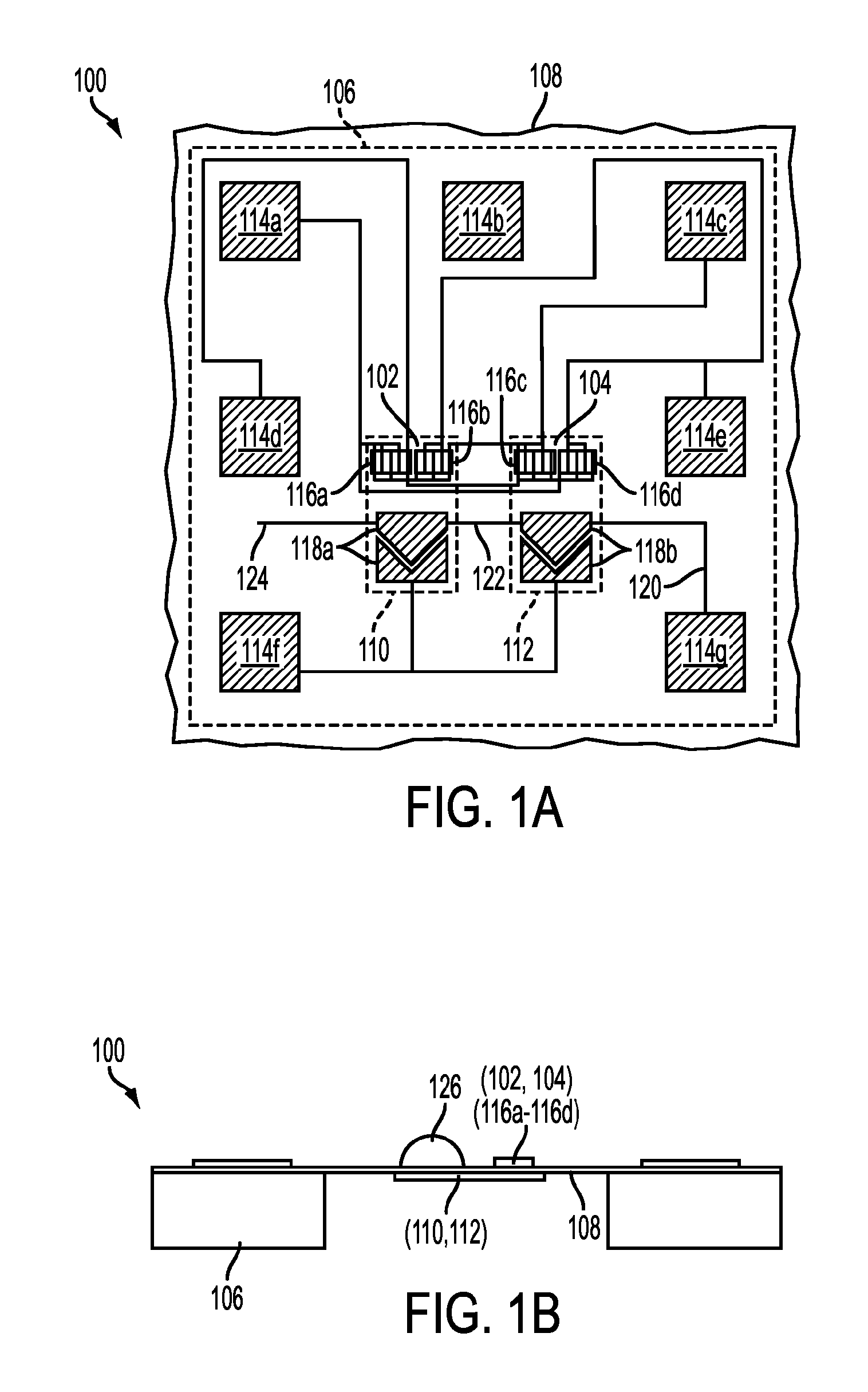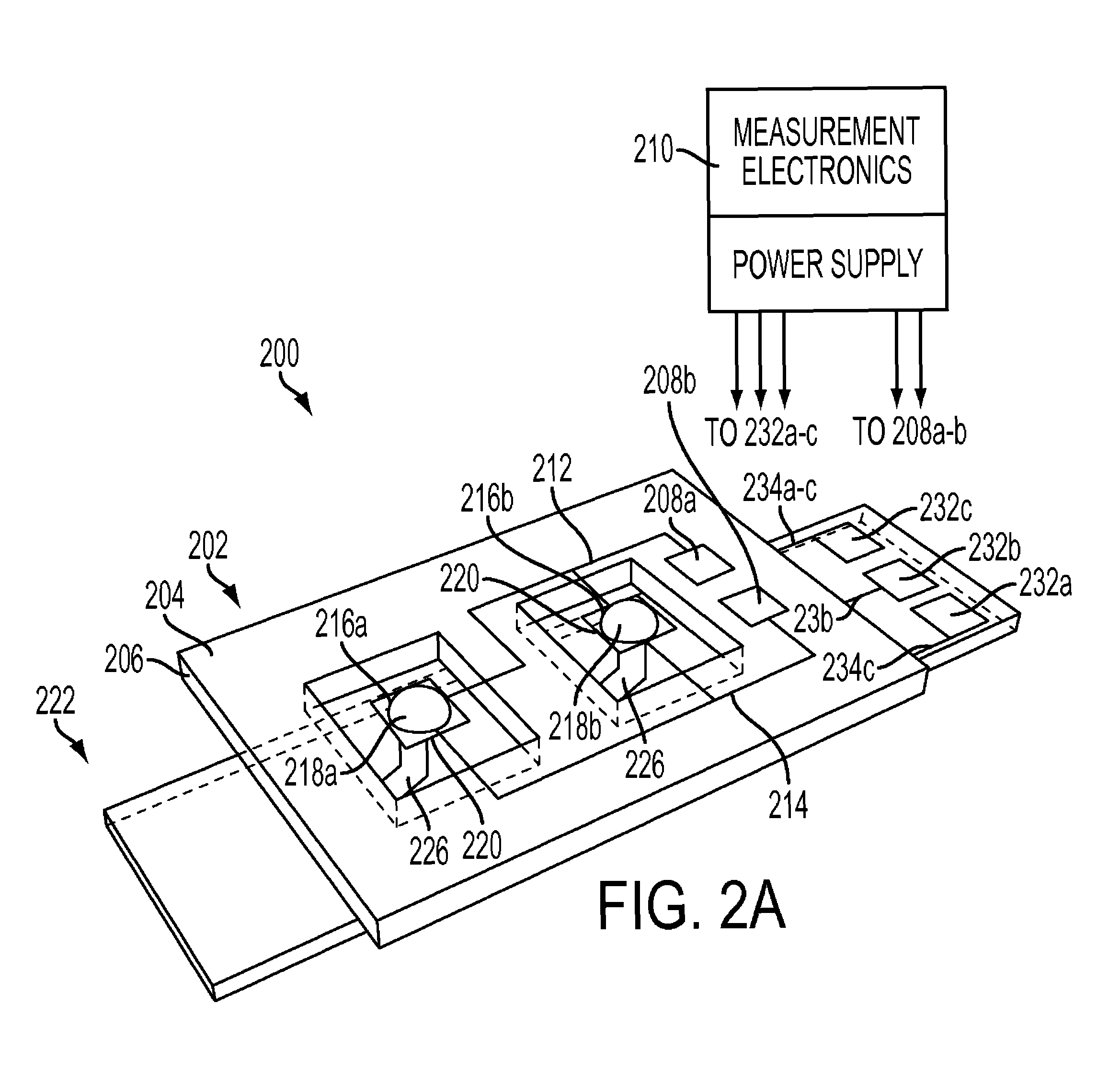Nanocalorimeter based on thermal probes
a thermal probe and nanocalorimeter technology, applied in the direction of instruments, heat measurement, material heat development, etc., can solve the problems of ineffective monitoring of a large number of reactions, system failure to measure very small samples,
- Summary
- Abstract
- Description
- Claims
- Application Information
AI Technical Summary
Benefits of technology
Problems solved by technology
Method used
Image
Examples
Embodiment Construction
[0023]Calorimetry is a powerful method for characterizing biochemical interactions. It does not require labeling or immobilization of reagents, so concerns about the effects of such modifications on the behavior of the reagents are eliminated. At the same time, assay development time and cost can be minimized because neither labeling nor immobilization protocols need to be established. For binding reactions, calorimetry can be used to provide a complete thermodynamic characterization. However, as mentioned in the Background, the use of conventional calorimetry is limited by large sample requirements and low throughput. Enthalpy array technology to enable calorimetry on a scale 200-times smaller than available with commercially available state of the art systems, which substantially reduces reagent costs has been developed. See for example, U.S. Pat. Nos. 7,147,763 and 7,141,210. By enabling parallel measurements, these approaches also reduce the measurement time by 100-fold. Both of...
PUM
| Property | Measurement | Unit |
|---|---|---|
| thick | aaaaa | aaaaa |
| thickness | aaaaa | aaaaa |
| length | aaaaa | aaaaa |
Abstract
Description
Claims
Application Information
 Login to View More
Login to View More - R&D
- Intellectual Property
- Life Sciences
- Materials
- Tech Scout
- Unparalleled Data Quality
- Higher Quality Content
- 60% Fewer Hallucinations
Browse by: Latest US Patents, China's latest patents, Technical Efficacy Thesaurus, Application Domain, Technology Topic, Popular Technical Reports.
© 2025 PatSnap. All rights reserved.Legal|Privacy policy|Modern Slavery Act Transparency Statement|Sitemap|About US| Contact US: help@patsnap.com



